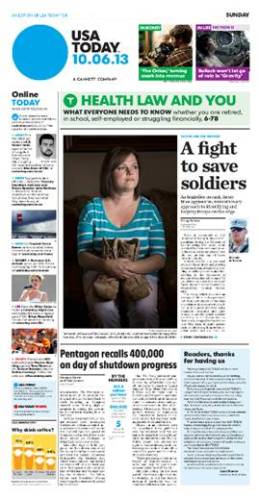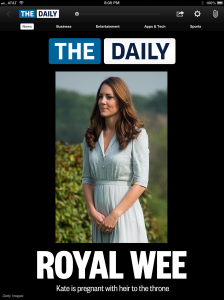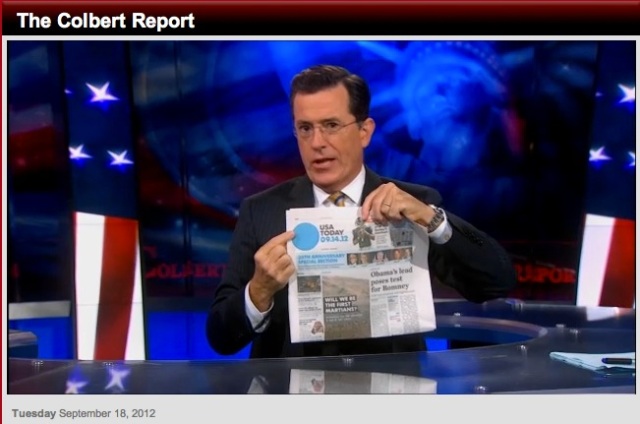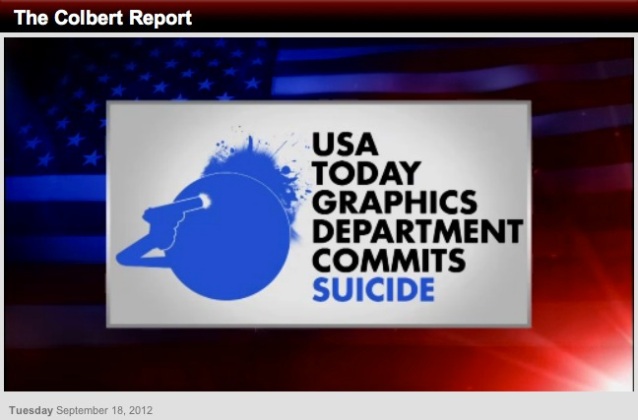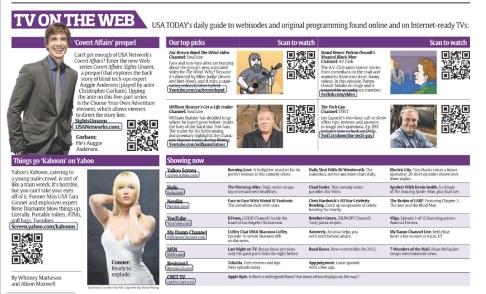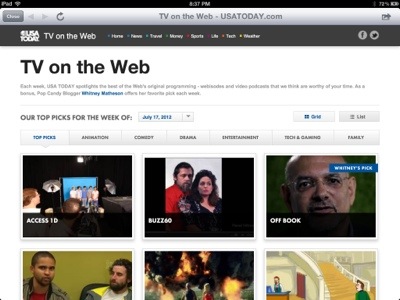Well it’s been two years and three IPads, so its a good time to step back and look at how my life as a heavy consumer of news has changed.
Much has changed. But there is no question that I have come to use both the IPad and IPhone for a great deal of news consumption, though I still largely depend on traditional brands. The latest IPad and IPhone have been particularly good to the news companies that embrace the tablet and mobile formats. The speed of downloads has improved dramatically, and the quality of video continues to improve. And, finally, advertisers are at least trying the platforms.
 Let me start with the The Daily, the first IPad native news business. I use them more today than I did in the past. The faster download times, the far better indexing and briefing features and the quality of the journalism have all made a difference, and as always, the application makes terrific use of the IPad’s true value to display beautiful photography. It’s slickness still makes it hard for me to grasp how timely the information is — it’s almost too pretty to make you believe it’s very current — but that may just be my problem associating beautiful design with magazine journalism. There isn’t enough video or interactive storytelling to make this a total home run yet, and too much of the video that is there is a talking head. I am a paid subscriber, but I don’t have the sense of urgency that I must have this product. It think still needs some defining and exclusive content. I do love the new “Breaking News Alert” (see left) that blasted in front of the cover when the news of a foiled Al Qaeda plot was reported.
Let me start with the The Daily, the first IPad native news business. I use them more today than I did in the past. The faster download times, the far better indexing and briefing features and the quality of the journalism have all made a difference, and as always, the application makes terrific use of the IPad’s true value to display beautiful photography. It’s slickness still makes it hard for me to grasp how timely the information is — it’s almost too pretty to make you believe it’s very current — but that may just be my problem associating beautiful design with magazine journalism. There isn’t enough video or interactive storytelling to make this a total home run yet, and too much of the video that is there is a talking head. I am a paid subscriber, but I don’t have the sense of urgency that I must have this product. It think still needs some defining and exclusive content. I do love the new “Breaking News Alert” (see left) that blasted in front of the cover when the news of a foiled Al Qaeda plot was reported.
I still use the NYPost App, after it has moved into Apple’s newsstand. It’s easy to navigate and a terrific digital manifestation of the paper’s look, feel and content, capturing much of the personality that the defines the Post. I have subscribed and I rarely buy or see a print edition anymore.
For the several months I have been using a terrific App called “PressReader” from Newspaper Direct, which offers access to “replica” versions of hundreds of newspapers around the world in real time. You can, for the price of a single subscription, get all the papers you want to get on the service. Or you can buy single newspapers when you want them. It’s a nifty App that shows the exact newspaper that is printed, but then allows you to drill down and navigate digitally by clicking on the stories you want to read. Hard to explain, easy to use. I have been able to keep up with the San Francisco Chronicle, Washington Post, and several other publications including some British papers, on an as-needed basis.
I still read my old standby national newspapers: The New York Times, The Wall Street Journal and USA Today via their apps. The Times is now part of the Apple Newsstand, but to me the application, while clean, loses too much of the look and feel of the times, and just seems less urgent and complete. Too many stories are first presented with a headline and a couple paragraphs, with no graphic stimulation. It’s easy to use, but has no soul and I frequently miss stories that I see in the Print Edition. I still get the NYTimes printed paper at home on the weekends, and I much prefer it.
The Wall Street Journal app is a much better translation of the newspaper and its feel. It also gives the reader a version of the journal that is updated to the time the reader has signed on. It’s a great mix of a daily newspaper of record and updated news since printing. There is growing use of photos and video that shows real promise.
Finally the USA Today Ipad App is also very clean. The good and the bad news about the USA Today app is that it is a close cousin to the look of the paper. While it captures some of the design feature of the paper, some have become tired. The site loses a sense of urgency and news judgement by stacking stories with essentially the same look and feel as each other. The larger layouts in the print version of the paper are often the most attractive devices in the newspaper, and they are not translated to this platform. Photos dominate the visuals, and the reader gets little interactive or even passive, graphic presentation that approaches what is so great about the print paper. The page looks the same every day. USAToday’s IPhone app is slicker and faster to use.
Broadcast news outlets have become a large part of my news consumption through digital platforms as well. On the financial news front, I love Marketwatch, but hate that there isn’t a better presentation of it’s news product on the IPad. There is a data app, which was recently updated, but while it’s clean and efficient, I hate that it is a fixed horizontal app, and when my IPad is in the upright position (I have a charger that leaves it vertically on my desk) the content is sideways and useless to me. I have the same problem with the Wall Street Journal Live App. So I have shifted to CNBC’s RT (Real Time) App, which is easy to use, gives me the most graphic depiction of Indexes, My Stocks, News (easy and efficient access to all news) and Videos and has the added bonus of being in Real-Time, not delayed data. And, there are much better and more timely videos, which you would expect. This is CNBC’s first major success on digital platforms.
CNN’s IPad app is very visual (It should use more words) and allows the viewer to watch CNN live. The ABC News, NBC News and CBS News Apps are all too visual, showing photos and a few words for every story, and linking to work they have largely done on TV. They will, someday, discover that words are also important to the storytelling process on digital platforms.
All in all, I am spending a lot more time on my IPad, including the time spent on News sites. My habits are changing…so are everyone else’s. Clearly the transition is taking place. But it still feels like we have some more changes to go and some new software and hardware to lead the way.


